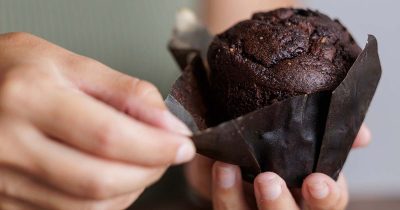
In 1973, the photo “Burst of Joy” captured a jubilant family rushing toward a returning POW, a moment so powerful it won a Pulitzer Prize. The image, full of euphoria, symbolized hope and reunion after the Vietnam War.
But the true story behind the photo? It’s a heartbreaking twist you won’t expect.
The Vietnam War was still raging in 1973, leaving deep scars on the American soul. But on March 17 of that year, a single photograph captured a rare moment of unfiltered joy. Taken at Travis Air Force Base in California, the image showed a returning prisoner of war, Lt. Col. Robert L. Stirm, being embraced by his whole family in an emotional homecoming.
Leading the charge was his 15-year-old daughter, Lorrie, her arms outstretched as she ran toward her father, followed closely by her brother Robert, sister Cynthia, mother Loretta, and youngest brother Roger, 12.
It was a picture-perfect moment — the kind that seemed to sum up everything Americans wanted to feel about the war’s end.
Sprinted across the runway
Lt. Col. Stirm, an Air Force fighter pilot, had been shot down over Hanoi in 1967 and spent nearly six grueling years as a prisoner of war. His family had long feared the worst, and when they finally received word that he was alive, they could hardly believe it. For Lorrie, the day felt surreal.
”I just wanted to get to Dad as fast as I could,” she told Smithsonian Magazine.
Sitting in the back seat of a station wagon on the tarmac, she had carefully chosen her favorite fuchsia miniskirt for the occasion. After six long years without him, she wanted everything to feel special.

But before they could embrace, there was another moment of waiting. Her dad was required to stand before a jubilant crowd and deliver a speech on behalf of those who had been freed as part of Operation Homecoming — the mission that brought 591 American POWs back after the Paris Peace Accords.
For the family, the wait felt endless. But when the speech was finally over, the door opened, and Lorrie took off running. Her sheer joy and eagerness earned her the nickname The Jumper or The Leaper in the years that followed.
As she sprinted across the runway, photographer Slava “Val” Veder, covering the event for The Associated Press, instinctively lifted his camera.
”You could feel the energy and the raw emotion in the air,” he recalled.
Won the Pulitzer Prize in 1974
He snapped a rapid series of shots just as the overcast sky provided perfect, shadow-free lighting.
”I had to back up 10 or 15 feet to shoot the picture over the back of another photographer. I was lucky”, said Sal Vader, a native of Berkeley, California.
The resulting image, which he titled Burst of Joy, was so powerful that he rushed to a makeshift darkroom — a repurposed women’s restroom on the base — to develop it. Within 30 minutes, the photograph was ready, and it was quickly sent out over the news wires.
It became an instant sensation, dominating newspaper front pages across the country. The following year, it won the Pulitzer Prize.
Why it became a symbol
What made this photograph so powerful that it resonated with so many people and even won the Pulitzer Prize in 1974? For one, it became the ultimate symbol of homecoming from the Vietnam War.
Lt. Col. Robert L. Stirm, then 39 years old, had endured 1,966 days in captivity —years filled with hardship. He had suffered gunshot wounds, endured torture, mock executions, and lived in constant fear.
Yet in the photograph, he appears in a crisp, new uniform, his face turned away from the camera. This anonymity made him more than just one man — it allowed him to represent all returning POWs and, in a broader sense, every soldier who had come home to waiting mothers, fathers, wives, daughters, and sons.
But despite the overwhelming joy captured in the image, there was a painful truth behind the moment — one that the photo didn’t reveal.
A hidden heartache
As with so many iconic images, there was more to the story than what the Burst of Joy photo captured.
Just three days before his return to American soil, Lt. Col. Stirm had received a devastating blow. A military chaplain delivered a letter from his wife, Loretta — a Dear John letter informing him that their marriage was over.
”I have changed drastically—forced into a situation where I finally had to grow up,” Loretta wrote. ”Bob, I feel sure that in your heart you know we can’t make it together—and it doesn’t make sense to be unhappy when you can do something about it. Life is too short.”

During his years in captivity, Loretta had been involved with other men, and by the time he returned, three of them had proposed to her. For Stirm, the news was an unbearable betrayal. The photo of his homecoming, which had come to symbolize national healing, was for him a reminder of personal loss.
”I can’t help but feel ambivalent about it,” he admitted in 2005. ”I was very pleased to see my children—I loved them and still do, and I know they had a difficult time—but there was a lot to deal with.”
”In some ways, it’s hypocritical”
Within a year, Robert and Loretta divorced. She remarried almost immediately and moved to Texas with her new husband. Stirm, meanwhile, continued his military career and was promoted to colonel before retiring in 1977.
Despite her infidelity, a judge ordered him to give Loretta 43% of his military retirement pay.
”It was kind of ironic,” Stirm later reflected. ”In some ways, it’s hypocritical, because my former wife had abandoned the marriage within a year or so after I was shot down. And she did not even have the honor and integrity to be honest with the kids. She lived a lie.”
The photo that had touched millions had, in his mind, always been a false image.
A divided family
After the divorce, custody of the children was split — Lorrie and Robert Jr. stayed with their father, while Roger and Cindy went with their mother.
”There was so much that my dad missed out on,” Lorrie later shared. ”And it took a while to let him back into our lives and accept his authority.”
For years, Stirm refused to display Burst of Joy in his home. But for his children, the image remained deeply meaningful. Decades after it was taken, all four of them had a copy hanging in their homes.

”It’s a wonderful piece of history that we just happened to stumble into,” Lorrie told AP in 1993. ”It never would have gone away in my mind, but seeing that photo brings it all back again — just all the joy that was there.”
Her younger sister, Cindy, standing just behind her in the photograph, had a more distant connection to the moment.
”It seems like another lifetime ago,” she said. ”I look at the picture, and I don’t see me. . . . I don’t feel like I was really a part of it. I was so young. I didn’t really know him when he left, and I thought it would be wonderful to have a dad because all my friends had dads at their functions.”
Why was Loretta there?
Though Loretta’s presence in the photo puzzled some — given that she had already decided to leave the marriage — her daughter Lorrie remained sympathetic to the challenges she faced.
”She had a rough job, raising four children on her own,” she said. ”She was very young.”
Loretta and Robert had met at a party just after he graduated from Air Force cadet school. They married in 1955 when she was just 19.Years later, after everything that had happened, Stirm found love again — but married and divorced once more.
Loretta passed away from cancer on August 13, 2010.
Though Burst of Joy continues to be celebrated as a symbol of resilience and reunion, for those in the photo, it remains a reminder of a far more complicated reality.
As we reflect on the iconic Burst of Joy photo, it’s clear that while the image captured a moment of triumph, it also held within it untold stories of betrayal, heartbreak, and the emotional toll of the Vietnam War.
For Lt. Col. Robert L. Stirm, the joy of the moment was intertwined with a painful reality—the collapse of a marriage, the scars of war, and the complexity of rebuilding a life after such an ordeal.
The Burst of Joy photo is more than just a snapshot of a homecoming; it’s a window into the emotional complexity of a generation that carried both the pride of survival and the weight of their personal battles. Behind every smile, every embrace, there are stories that remain untold, shaping the legacies of those who served and the families who waited.
READ MORE
- Dairy Queen store got in serious trouble after posting controversial sign
- The moment Diana realized Charles was having an affair




